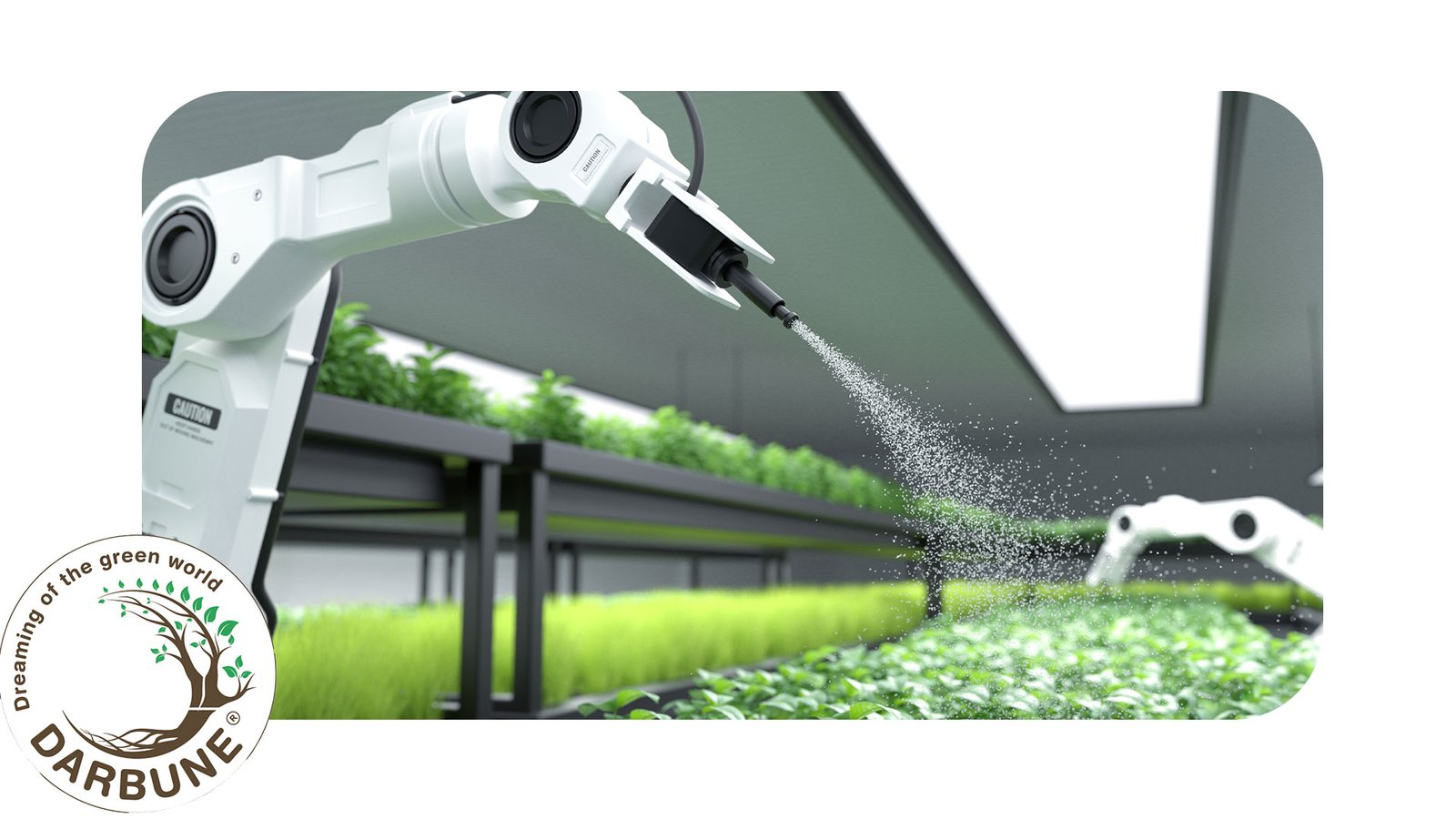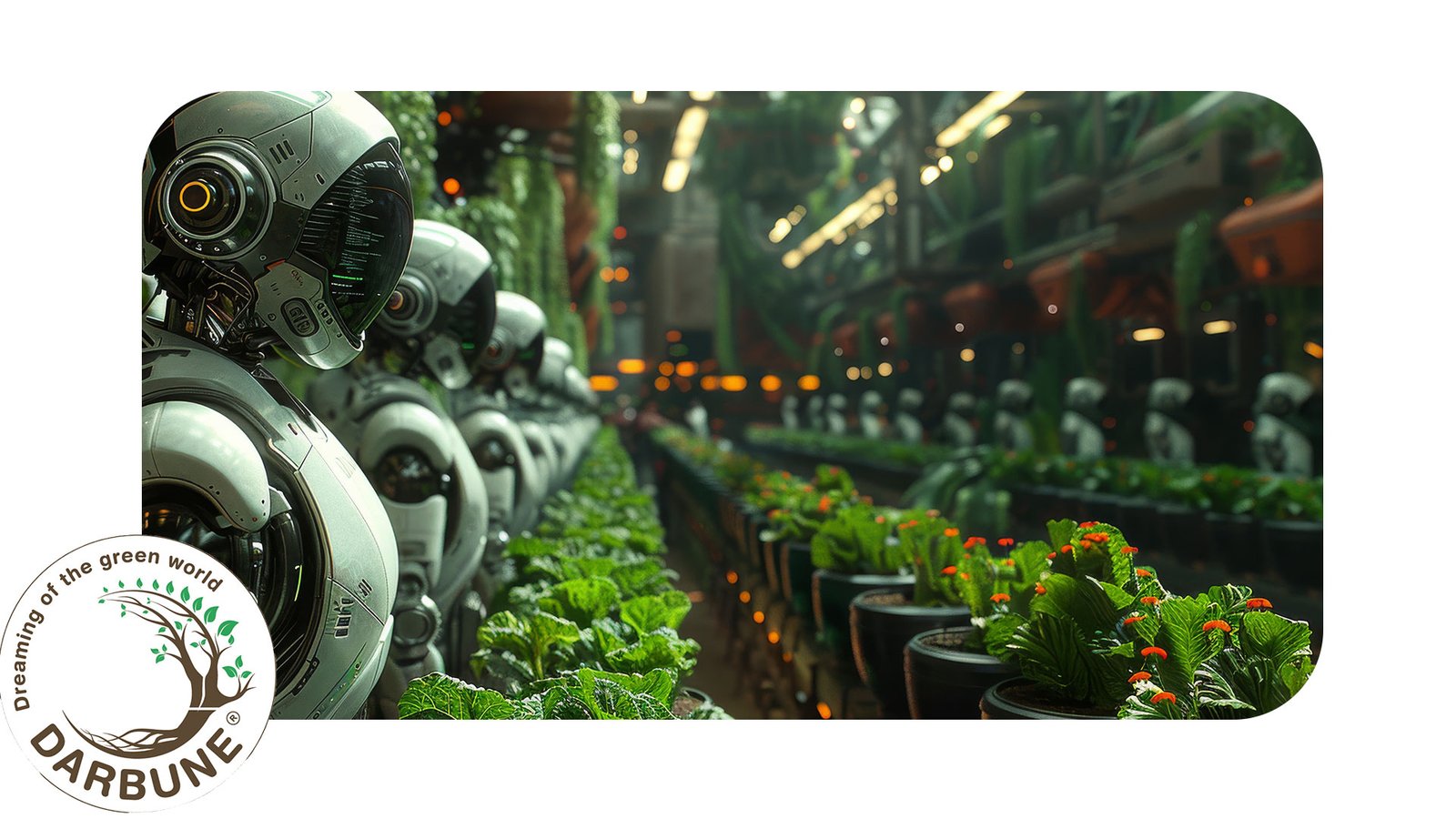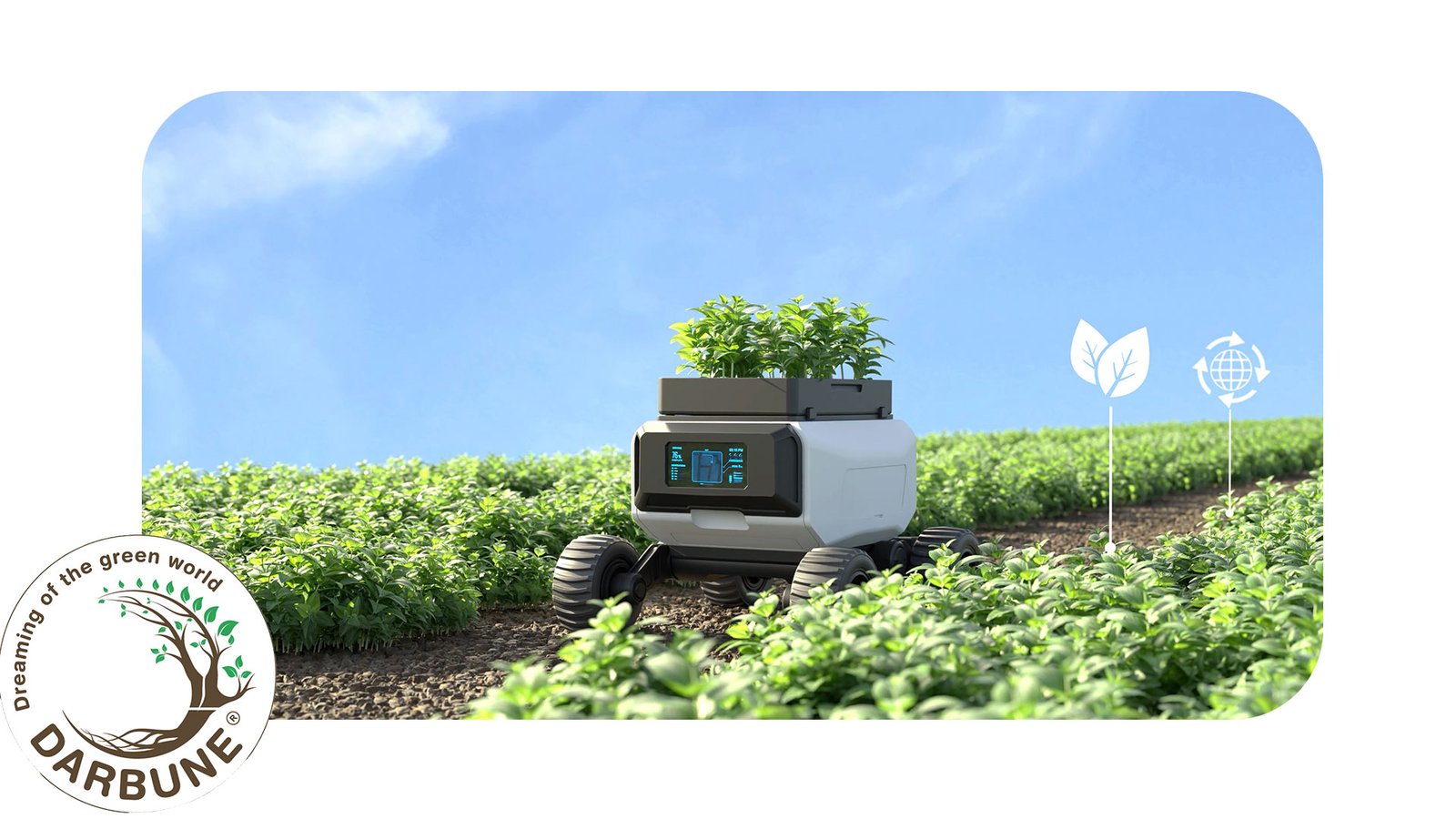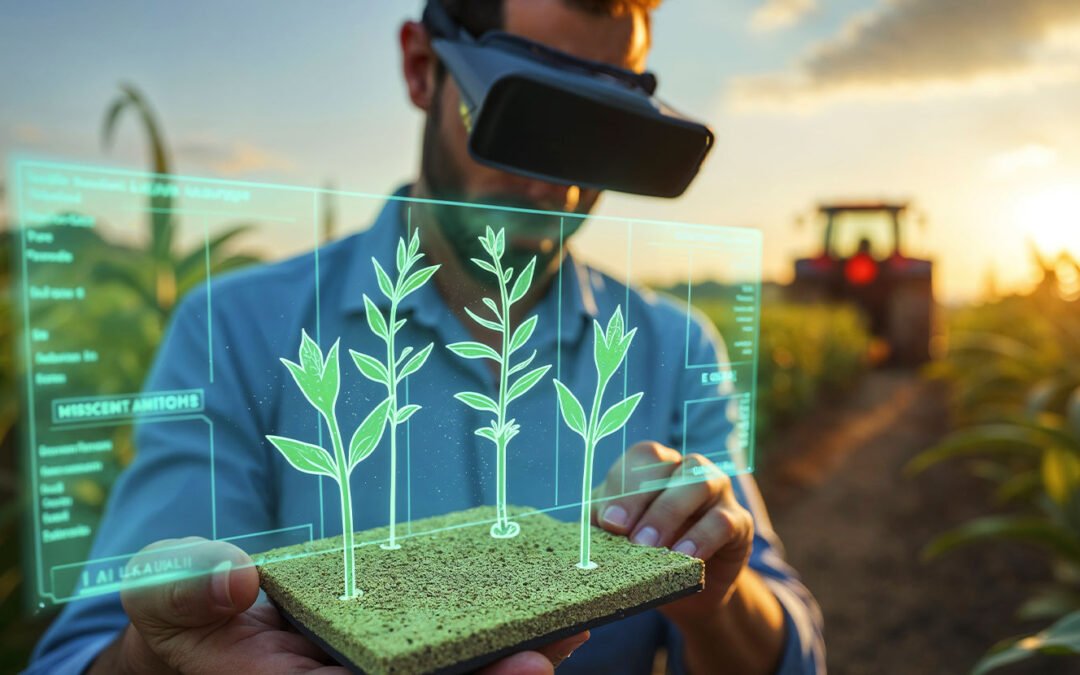،echnology is everywhere , you can see it in different types of farming, especially in Hydroponic Farming. You will learn How to Use AI in Hydroponic Farming by the end of this article, so make sure to stay with us till the end.

A Guide to Use AI in Hydroponic Farming
You can use AI to make everything different even the way we grow our plants, you will be using AI to make the farming experience automatic and use our resources better, and most importantly we can provide real-time information to get informed about our plants and this feature helps us in so many ways.
AI for Controlling and Monitoring The Environment
You can use AI systems to keep track of temperature, humidity, and air quality, you can also automatically adjust heating, cooling, and keeping plants happy and reduce energy use. There are sensors that watch the nutrient levels and pH in the water, AI then adjusts these in real-time to ensure plants get what they need and stay healthy. AI can monitor water and nutrient levels, and make automatic changes to keep plants hydrated and well-fed, this also prevents overwatering or even under-fertilizing. AI can analyze data from sensors to expect when equipment might fail so it makes us able to catch problems early which means fixing them before they get to disrupt plant growth.
Analyzing By Using Cameras

Did you know that AI can even analyze images of plans to track their growth and health, and by that, it helps farmers spot issues early and take action? This camera detection helps to detect early signs of diseases and pests and lets farmers act quickly to protect their crops. Tools like Sairone use AI to spot diseases from images so farmers reduce crop losses by acting on time. AI can use plant growth data to predict when crops will be ready to harvest and also how much yield to expect, by AI helps farmers plan better. It also guides robots to do tasks like pruning, thinning, and also selective harvesting.
Analyzing Data and Helping Decisions
AI can look at past data to find the best-growing conditions for different plants, which leads us to faster growth and bigger yields. AL can analyze water, nutrients, and energy use to find ways to save resources and reduce costs. These systems can combine data from various sensors to adjust climate and nutrient delivery, keeping the environment optimal for plant growth. This is an important topic because of all the damage that our environment has caused, which has led to Climate change, you can read our blog under the name of Climate Change. Cloud-based AI platforms can combine data from all parts of the farm, helping farmers make smart decisions about resource use, they also can provide useful information about crop choices you have to consider, overall it can help you to manage your farm better.
Optimizing Energy and Resources
AI can look at energy use data and find ways to save energy in lighting and other farm operations, it can monitor water use, detect leaks, and suggest recycling methods to reduce usage. By analyzing plant growth and nutrient data, Apparently, AI can deliver nutrients better, minimizing waste, and it does not harm the environment that much.
Using Renewable Energy Sources
Hydroponic farms can use AI to manage energy from sources like solar panels or wind turbines, It supports the plant and promotes sustainability.
Robotics and Automation in Hydroponic Farming
AI-guided robots can plant seeds, transplant seedlings, reduce labor, and improve efficiency, can also control robots to move supplies, and trays, and harvest crops, optimizing and reducing manual labor. AI-powered robots can navigate greenhouses, create maps, and adapt to changes, and robots with AI cameras can monitor plants’ health and report issues to central systems for real-time problem-solving.
Managing and Integrating Data
AI sensors collect real-time data on temperature, humidity, nutrients, and plant growth for AL analysis, and it help standardize data from different sources, ensuring smooth analysis. Data in the cloud is stored very secure and by that it helps AL to perform analyses, Cloud platforms enable secure data sharing between farmers, researchers, and advisors, fostering collaboration and improvement of AI models and practices.
Why We Need to Use AI in Hydroponic Farming?

Hydroponic Farming is a farming method that does not use soil for growing plants, it comes with so many benefits as it is suitable for smaller spaces and urban areas, there are fewer pests because there is no soil so we do not need to use heavy chemical for this and our food is a lot healthier, our plants get their nutrients directly from water and they grow fast, and also you can grow plants all year long no matter the weather outside because you have the full control over your environment and you can adjust it based on your plants needs. If you are interested in this type of farming and want to know more about it check out our full article about Hydroponic Farming on our website. We use AI simply to make our work easier, provide healthier and more food, and get the best from our work. Check out our Indoor Farming and Cafe Farming services to find easy ways to grow your plants indoors.
Conclusion
In this article, we provided an ultimate guide on How to Use AI in Hydroponic, this farming method combined with AI offers many benefits, we use AI to make our work easier and provide the best food, find out more about this topic on Official Website of the United States government. You can explore the USDA’s resources on AI in agriculture and learn more about the advancements in hydroponic farming with AI, let us know what you are thinking about this article.

